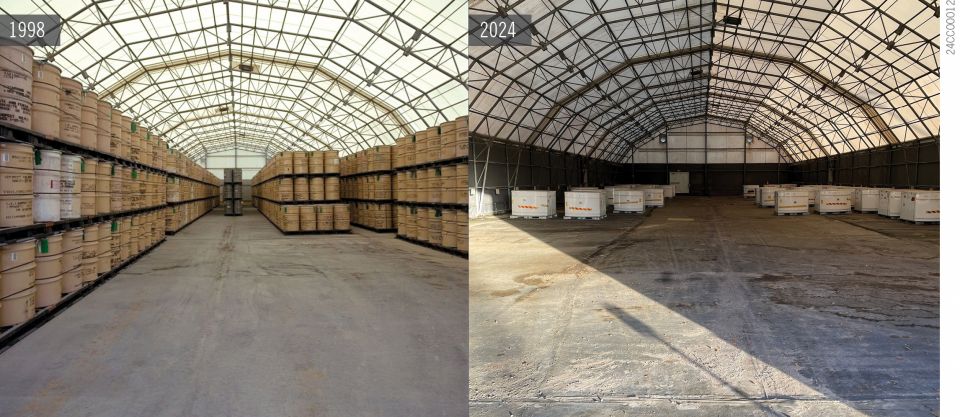New work for old FLiBe? DOE considers reuse of molten salt reactor coolant

FLiBe—a mixture of lithium fluoride and beryllium fluoride—is not an off-the-shelf commodity. The Department of Energy suspects that researchers and reactor developers may have a use for the 2,000 kilograms of fluoride-based salt that once ran through the secondary coolant loop of the Molten Salt Reactor Experiment (MSRE) at Oak Ridge National Laboratory.
On October 31, in cooperation with its Office of Nuclear Energy and Office of Science, the DOE opened a solicitation for expressions of interest (EOI) from universities, companies, and organizations that may require fluoride-based molten salts for nuclear reactor applications. That work could include any stage of the reactor life cycle, from concept through operations, and may include experiments related to testing or direct use in a reactor.
The MSRE and its salts: The MSRE operated from 1965 to 1969 at ORNL as an early test of the liquid-fueled molten salt reactor concept.
The 7.4-MWt test reactor used a fuel/coolant of 7LiF-BeF2-ZrF4-UF4 (65-29.1-5-0.9 mole percent) in its primary loop with a graphite-moderated core, and its secondary coolant loop was unfueled and comprised 7LiF-BeF2 (66-34 mole percent). It is this secondary loop FLiBe that could be made available after the DOE evaluates any EOI responses received.
Over 50 years after the MSRE last operated, the estimated 2,000 kilograms of FLiBe salt at ORNL has not been fully characterized but “is assumed to contain impurities.” In 1969, the FLiBe salt was stored in a coolant drain tank cell, where “between 1969 and 1999, the FLiBe salt was most likely exposed to a humid atmosphere at least once.”
In 1999, the MSRE FLiBe salt was remelted and transferred to multiple storage vessels—each with a capacity of about 240 liters and 530 kilograms of FLiBe—to support decommissioning activities.
New jobs for used FLiBe? Molten salt reactors—both those that use molten salt as a coolant passing through a solid fuel core and reactors that (like the MSRE) feature liquid fuel dissolved in salt—have received increased attention in recent years.
For both reactor applications, MSR developers require data on fundamental salt properties and must develop infrastructure, materials, models, fuels, and fuel mass accountability technologies, according to the DOE, with that work “being significantly more complicated for liquid fuel salt reactors.” Some high priority research areas include salt chemistry, material testing, computational modeling, and technology development and demonstrations.
The secondary unfueled salt coolant contains 99.99 percent enriched lithium-7, which the DOE believes could be useful for “nuclear environments and experiments where tritium production is problematic.”
What the DOE wants to know: The DOE is not currently preparing any requests for information, requests for proposals, or funding opportunity announcements related to the EOI. First, the DOE wants to hear directly from potentially interested respondents about the following:
- The respondent’s intended application(s) using the MSRE FLiBe salt.
- Benefits to the U.S. nuclear industry and/or U.S. energy policy goals of the respondent’s intended application(s) using the MSRE FLiBe salt.
- Technical challenges (e.g. transport, handling, disposal, processing, etc.) associated with MSRE FLiBe salt.
- The respondent’s capabilities (e.g. fiscal, facilities, personnel, etc.) to achieve the intended application(s).
Responses will be evaluated by relevant DOE organizations, including the offices of Nuclear Energy and Science, to determine the number of qualified respondents.
Respond: Interested universities, companies, or organizations should submit their response by email to EOIMSRESecondarySaltSubmission@doe.gov before midnight (EST) on December 1. Review the opportunity for more details.








